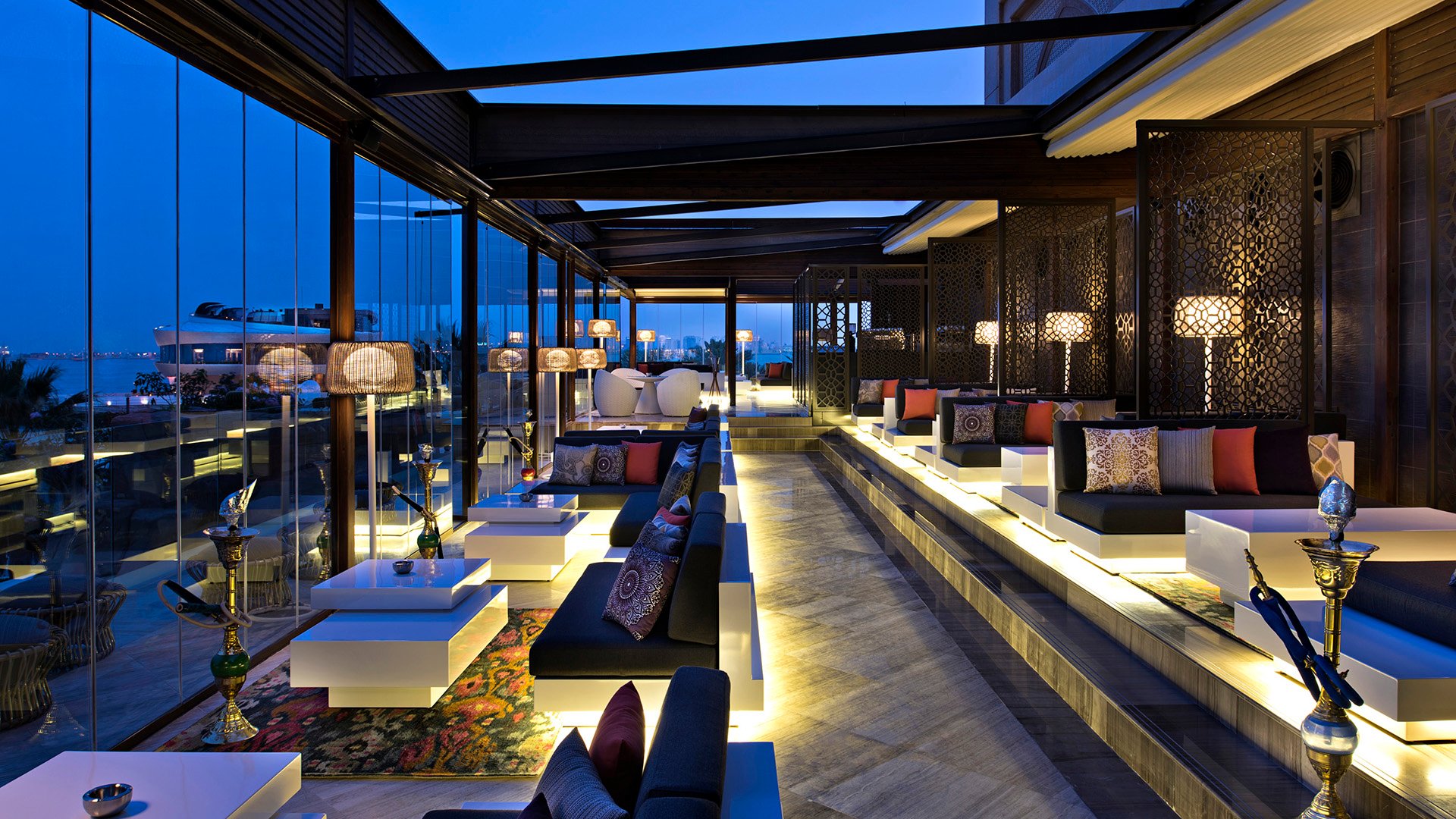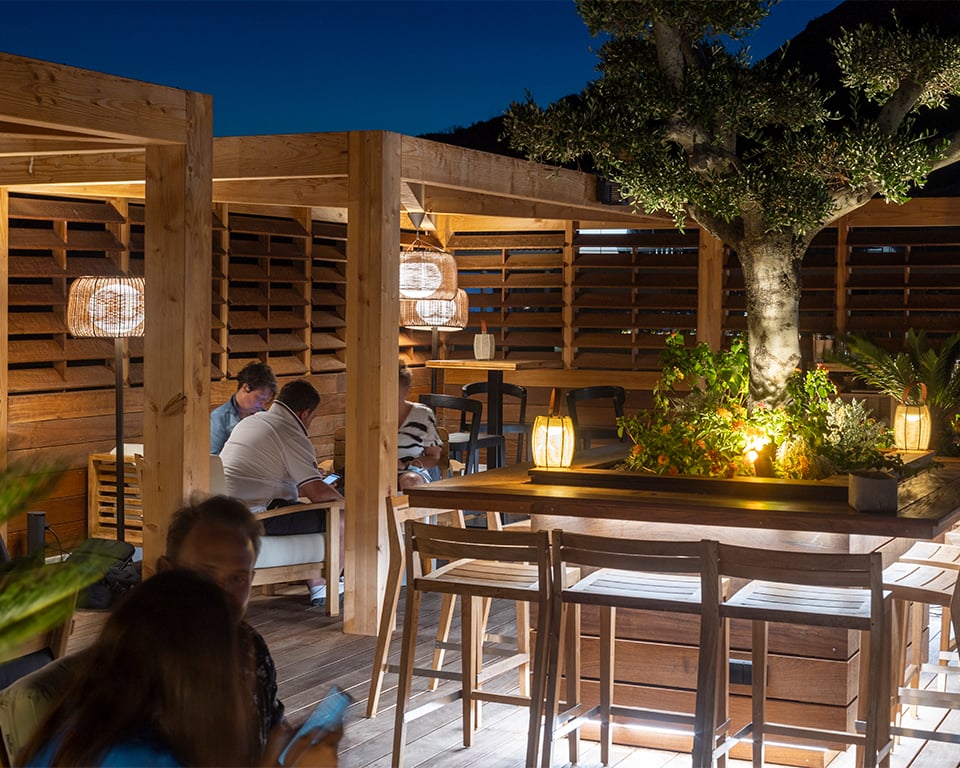The lighting in hotel design is unique and goes beyond simply providing light. It plays an essential role in creating attractive atmospheres, ensuring guest satisfaction, and defining the overall identity of the space. A careful approach to lighting design can significantly enhance the guest experience and contribute not only to success but also to strengthening the hotel's identity and brand.
How do we achieve this as designers?
Table of contents
1. Atmosphere and Guest Experience
2. Thematic design and architectural style
3. Use of colors and special effects
4. Visual Icons and Brand Elements
5. Distinguished Environments in Various Areas

1. Atmosphere and Guest Experience
Lighting sets the overall atmosphere and directly affects the guest experience. A hotel that achieves carefully designed lighting can convey feelings of luxury, comfort, modernity, or any other desired sensation, creating a lasting impression on visitors from the moment they are welcomed.
- Luxury sensations: In a luxury hotel, lighting becomes a key component to evoke a sense of elegance and exclusivity. Strategically placed light sources, such as pendant lamps or wall sconces with warm tones, can enhance architectural details and highlight specific areas, creating a luxurious and welcoming ambiance.
- Comfort and well-being: Soft and diffused lighting in rest areas, such as rooms and living areas, contributes to a sense of comfort and well-being. Reading lamps next to beds, for example, provide focused and adjustable light for guests to enjoy relaxed reading before sleep.

2. Thematic design and architectural style
Lighting contributes to the stylistic coherence of the hotel, ensuring that every element, from public areas to rooms, follows the same visual line. The choice of fixtures, light tones, and the arrangement of lights is carefully planned to maintain a harmonious aesthetic throughout the space.
- Modern approach: For hotels with a modern and contemporary design, lighting often incorporates clean lines, minimalist fixtures, and advanced technology. Recessed lights, pendant lamps with modern designs, and intelligent control systems contribute to creating a sophisticated and cutting-edge atmosphere.
- Classic style: In establishments with a classic and traditional focus, lighting tends to reflect elegance and timelessness. Ornate chandeliers, wall sconces with decorative details, and classic floor lamps can enhance the hotel's classic architecture, creating an atmosphere of luxury and sophistication.
- Innovative design: Hotels with innovative designs often seek unconventional forms and structures. Lighting in these cases can adopt unusual geometric shapes, sculptural design lamps, or installations that defy conventions, contributing to the space's avant-garde and uniqueness.
3. Use of colors and special effects
The incorporation of colors and special effects in lighting can be a distinctive signature. Hotels using dynamic lighting, color changes, or projections can create memorable visual experiences directly associated with their brand identity.
- Dynamic lighting: The ability to change the intensity and tone of light throughout the day or in different areas of the hotel adds dynamism to the environment. For example, the lobby's lighting can be brighter and more energizing during the day, transforming into warmer and softer tones at night to create a relaxed atmosphere.
- Color changes: The possibility of changing lighting colors according to the occasion, season, or simply to create different moods is an effective strategy. A hotel may use bright and cheerful colors in common areas for festive events or switch to softer tones to promote a relaxed atmosphere.
- Projections and visual effects: The incorporation of projections and visual effects through specialized lighting allows for creating unique scenarios. For example, wall or ceiling projections representing thematic or artistic elements can offer guests a unique and captivating visual experience.
- Memorable experiences: Hotels offering unique and memorable visual experiences through lighting tend to stand out in guests' minds. Creating striking visual moments, whether through interactive light installations, light and sound shows, or simply through creative use of lighting, contributes to making the hotel stay unforgettable.
4. Visual icons and brand elements
Lighting can be used to highlight visual icons and brand elements of the hotel. This may include illuminated signs, logos on the facade, or even specific lighting designs repeated throughout the space, creating visual coherence associated with the brand.
- Illuminated Signs: Illuminated signs are an effective way to attract attention and communicate the hotel's presence. Whether at the main entrance, on the rooftop, or in strategic locations, sign lighting can be used to ensure optimal visibility both day and night, creating a striking presence in the environment.
- Logos on Facade: The hotel facade serves as a canvas to highlight the brand logo. Carefully designed lighting can emphasize the logo, whether through recessed lighting, backlighting, or luminous projections. This not only reinforces the brand identity but also creates a memorable impression on passersby.
- Specific Designs: Some hotels opt for specific lighting designs repeated throughout the establishment, whether in common areas, hallways, or even in architectural details. These designs may incorporate distinctive visual elements representing the essence of the brand, such as geometric shapes, thematic patterns, or specific color combinations.

5. Distinguished environments in various areas
Lighting can also be used to create distinguished environments in different areas of the hotel, such as restaurants, bars, common areas, and rooms. Each space can have its own unique visual identity through custom lighting design.
- Restaurants: In restaurants, lighting can be adapted to create cozy and elegant atmospheres. Pendant lights over tables, accent lighting on walls, or luminous installations on the ceiling can be used to enhance the dining experience and define the place's aesthetics.
- Bars and entertainment areas: In bars and entertainment areas, lighting can be more vibrant and dynamic. Colored lamps, bar lighting, and lighting systems synchronized with music can create a lively and festive atmosphere, inviting guests to relax and enjoy.
- Common areas and lobbies: Common areas, such as lobbies and lounges, can benefit from lighting that encourages socialization and relaxation. Soft and warm lighting, combined with floor lamps or accent lighting on furniture, creates a welcoming atmosphere that fosters interaction and comfort.
- Rooms: In rooms, lighting can be personalized to suit different situations and moods. Reading lights next to the bed, dimmable lighting options, and soft ambient light contribute to a personalized and comfortable experience for guests.
- Spas and wellness areas: In areas dedicated to wellness, such as spas and gyms, lighting can be designed to promote relaxation and rejuvenation. Soft lights, indirect lighting, and warm tones can contribute to creating a calm and rejuvenating environment.
- Meeting rooms and events: In meeting rooms and event spaces, lighting can be versatile to suit different needs. Adjustable lighting systems, luminous projections, and visual effects can be used to create the right atmosphere for professional presentations or social events.
- Terraces and outdoor areas: For outdoor areas, such as terraces and gardens, lighting can highlight the beauty of the natural surroundings. In-ground lights, string lights, or portable lamps can create a charming and welcoming atmosphere, extending the hotel experience outdoors.
- Art galleries or exhibition spaces: In hotels hosting art galleries or exhibition spaces, lighting plays a crucial role in the proper display of artworks. Directional lighting systems, recessed spotlights, and LED technology can effectively highlight art pieces.
At LUMEN, lighting design in hotels goes beyond serving a utilitarian function; it becomes a fundamental tool for sculpting memorable experiences. Beyond simply illuminating spaces, we are creators of captivating atmospheres that directly influence end-user satisfaction.
